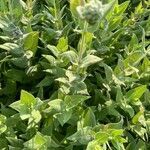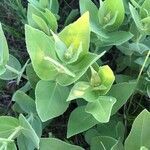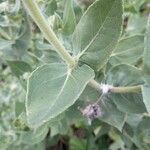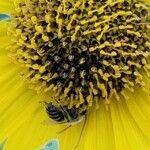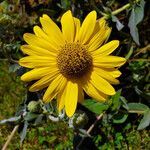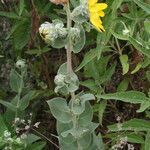Perennial from stout rhizomes, usually colonial, 0.5–1(–1.2) m, densely and softly hairy throughout; lvs sessile, subcordate, ascending, broadly lanceolate to broadly ovate or oblong, 6–15 × 2–8 cm, 1.4–3(–4) times as long as wide, serrulate or entire; uppermost lvs sometimes alternate; heads few or solitary; disk yellow, 2–3 cm wide; invol bracts slightly imbricate, lanceolate, acuminate, often finally glandular as well as densely white-hairy, the upper part loose or spreading; rays mostly 16–35, 1.5–3.5 cm; 2n=34. Prairies and other dry places; chiefly Ozarkian and midwestern, from O. to Wis., s. Io., and e. Kans. s. to Ga. and Tex., and occasionally intr. e. to the Atlantic. July–Sept. A probable hybrid with H. giganteus has been named H. doronicoides Lam.
